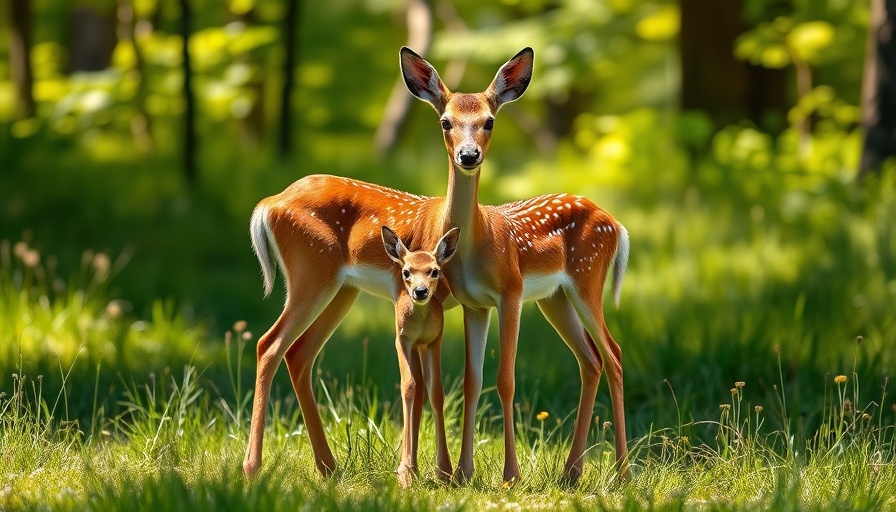
The Hidden Dangers of Chronic Wasting Disease Threatening Deer Populations
Recent research has unveiled alarming insights regarding Chronic Wasting Disease (CWD) in deer, highlighting a concerning transmission method that could have far-reaching implications for wildlife health. CWD, a contagious neurological disease affecting deer and similar species, has been shown to be transmissible through unborn fawns, raising significant questions about wildlife management practices and ecological balance.
Understanding CWD and Its Effects
Chronic Wasting Disease is part of a group of diseases known as transmissible spongiform encephalopathies, which lead to the degeneration of brain tissue and ultimately result in death. Infected animals exhibit symptoms such as weight loss, abnormal behavior, and lack of coordination. The recent findings suggest that pregnant does may transmit CWD to their fetuses, a discovery that poses a particular threat to deer populations, which have already been affected by the disease in over 24 states in the U.S.
Why This Matters for Outdoor Enthusiasts
For families who enjoy outdoor activities such as hunting and wildlife observation, these developments are pivotal. The potential for CWD to spread can affect not only deer numbers but also the ecosystems that rely on them. As families engage in activities like camping, hiking, and wildlife viewing, awareness and understanding of CWD can help ensure both public safety and the sustainability of outdoor experiences for future generations.
Broader Environmental Implications
This growth in CWD not only impacts deer but could extend to ecosystems that depend on healthy deer populations. As key grazers, deer influence vegetation patterns, which in turn affect other wildlife and the health of forests. An unchecked spread of CWD could disrupt these ecological dynamics, prompting a need for increased monitoring and management strategies.
What Can Be Done? Steps for Prevention
Engaging with local wildlife agencies and understanding the regulations surrounding hunting and baiting practices can play a critical role in avoiding further transmission of CWD. For families passionate about nature, there are ways to contribute to the prevention of CWD spread. Participating in local discussions, supporting wildlife conservation efforts, and encouraging responsible hunting practices are tangible steps that can foster a healthier environment.
The Importance of Awareness
As we gather as families in the great outdoors, it’s essential to stay informed about such diseases affecting wildlife. Not only does this knowledge help protect our favorite outdoor activities, but it ensures we actively contribute to the preservation of our wildlife resources. Investing time into learning about CWD and its implications fosters a more extensive connection between families and the environments they cherish.
In conclusion, understanding the dynamics of CWD transmission is vital for all who partake in nature's offerings. By staying informed and taking preventative measures, we can help balance wildlife health with our outdoor pursuits, ensuring family-friendly adventures remain vibrant and plentiful for the future.
 Add Row
Add Row  Add
Add 




Write A Comment